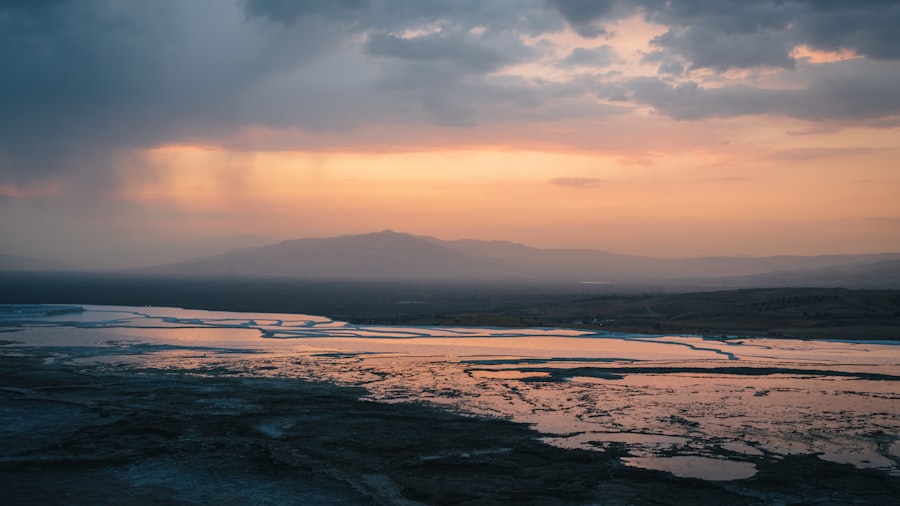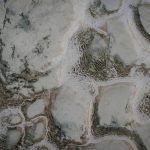The Mysterious Chocolate Hills of Bohol
Description
The Chocolate Hills, a geological wonder located in the Bohol province of the Philippines, have captivated visitors with their unique conical shapes and lush green landscape.
Geologically, the Chocolate Hills are believed to have formed during the Pleistocene epoch, approximately 1 to 2 million years ago.
This period was marked by significant geological activity, including the uplift of limestone deposits that were shaped by erosion over millennia. The hills are primarily composed of limestone, which has been sculpted by natural processes such as rainwater erosion and the dissolution of soluble rocks, leading to the formation of these iconic mounds. Local legends also play a significant role in the narrative surrounding the Chocolate Hills.
One popular tale tells of a giant named Arogo who fell in love with a mortal woman named Aloya. When Aloya passed away, Arogo was heartbroken and wept for days, his tears forming the hills as they dried. This poignant story not only adds a layer of cultural significance to the landscape but also reflects the deep connection that the local people have with their environment.
The interplay between geological science and folklore creates a rich tapestry of meaning surrounding the Chocolate Hills, making them not just a natural wonder but also a symbol of local heritage.
Key Takeaways
- The Chocolate Hills are a geological formation in the Bohol province of the Philippines, with over 1,200 cone-shaped hills.
- The hills are made of marine limestone and were formed by the uplift of coral deposits and the action of rainwater and erosion over millions of years.
- According to local legend, the hills were formed from the tears of a giant named Arogo, who wept over the death of his mortal beloved.
- The Chocolate Hills are home to a diverse range of flora and fauna, including endemic species such as the tarsier and the Philippine python.
- Efforts are being made to promote sustainable tourism and conservation of the Chocolate Hills, including the establishment of protected areas and visitor centers.
The Geological Formation of the Hills
The Formation of the Hills
As tectonic forces uplifted this limestone, it became exposed, leading to a series of erosional processes that shaped the landscape into its current form. Rainwater, slightly acidic due to dissolved carbon dioxide, seeps into cracks in the limestone, gradually dissolving it and creating the distinctive conical shapes that we see today.
The Role of Climate
The unique topography of the Chocolate Hills is further enhanced by the region’s tropical climate, which contributes to the rapid erosion of the limestone. During the dry season, the grass covering the hills turns brown, giving them a chocolate-like appearance—hence their name.
A Dynamic Landscape
This seasonal transformation is not only visually striking but also highlights the dynamic nature of the landscape. The hills vary in height, with some reaching up to 120 meters, and their number is estimated to be around 1,268 to 1,776, depending on how one defines a hill. This variability adds to their allure and makes them a subject of ongoing geological research.
The Legend of the Chocolate Hills

The legend of the Chocolate Hills is an integral part of Bohol’s cultural identity and serves as a captivating narrative that has been passed down through generations. One of the most well-known stories involves Arogo, a giant who was said to possess immense strength and a heart full of love. His affection for Aloya, a beautiful mortal woman, was profound; however, tragedy struck when Aloya died unexpectedly. Overcome with grief, Arogo wept for days on end, and his tears formed the hills that now dot the landscape. This tale not only explains the origin of the hills but also embodies themes of love, loss, and the connection between humans and nature.
Another version of the legend speaks of two feuding giants who engaged in a fierce battle that lasted for days. After their conflict ended, they left behind piles of stones and dirt that eventually transformed into the hills we see today. This narrative emphasizes themes of conflict and resolution while also highlighting the dramatic nature of the landscape’s formation.
Such legends enrich the experience for visitors who come to explore the Chocolate Hills, as they provide a deeper understanding of local beliefs and traditions. The stories serve as a reminder that these natural wonders are not merely geological formations but are also imbued with cultural significance.
The Biodiversity of the Chocolate Hills
| Aspect | Metrics |
|---|---|
| Number of Species | Over 1,200 plant species, including 273 trees, 1,000 flowering plants, and 100 ferns |
| Endemic Species | At least 126 species of birds, 27 species of mammals, and 100 species of reptiles and amphibians |
| Conservation Status | Considered a protected landscape and a key biodiversity area |
| Threats | Deforestation, habitat loss, and climate change |
The Chocolate Hills are not only remarkable for their geological features but also for their rich biodiversity. The surrounding area is home to various species of flora and fauna that thrive in this unique environment. The hills are primarily covered with grasslands, which provide habitat for numerous species of birds and small mammals.
Among these are endemic species such as the Philippine tarsier, one of the world’s smallest primates known for its large eyes and nocturnal habits. The presence of such unique wildlife underscores the ecological importance of this region. In addition to animal life, the vegetation around the Chocolate Hills includes various grasses and shrubs that adapt well to the limestone soil.
During the rainy season, these plants flourish, creating a vibrant green landscape that contrasts sharply with their dry-season appearance. The biodiversity found in this area is crucial for maintaining ecological balance and supporting local ecosystems. Conservation efforts are essential to protect this unique habitat from threats such as deforestation and urban development.
By preserving both flora and fauna, we can ensure that future generations will continue to appreciate the natural beauty and ecological significance of the Chocolate Hills.
The Tourism and Conservation Efforts
Tourism plays a vital role in both the economy and conservation efforts surrounding the Chocolate Hills. As one of Bohol’s most famous attractions, they draw thousands of visitors each year who come to marvel at their unique beauty. Local businesses have flourished as a result, providing services such as guided tours, accommodations, and local cuisine that showcase Bohol’s rich cultural heritage.
However, with increased tourism comes responsibility; it is essential to balance economic benefits with environmental sustainability. Conservation initiatives have been implemented to protect this natural wonder from potential degradation due to tourism activities. Local government units have established guidelines for visitors to minimize their impact on the environment while still allowing them to enjoy this breathtaking landscape.
Educational programs aimed at raising awareness about biodiversity and conservation are also being promoted among tourists and locals alike. These efforts are crucial in ensuring that while people can experience the beauty of the Chocolate Hills, they also understand their importance and contribute to their preservation.
The Best Viewing Points for the Chocolate Hills

Chocolate Hills Complex: Unobstructed Views
One of the most popular spots is the Chocolate Hills Complex located in Carmen, Bohol. This site features an observation deck that provides visitors with an unobstructed view of hundreds of hills stretching across the horizon. The vantage point allows for stunning photographs at sunrise or sunset when the light casts dramatic shadows over the hills.
Sagbayan Peak: A Different Perspective
Another notable viewing area is located at Sagbayan Peak, which offers a different perspective on the hills along with additional recreational facilities such as zip lines and gardens. This location is particularly appealing for families looking for a day out in nature while enjoying various activities.
Unique Experiences at Each Viewpoint
Each viewpoint provides its own unique experience, allowing visitors to connect with this natural wonder in diverse ways. Whether one seeks solitude or adventure, these viewing points enhance appreciation for the Chocolate Hills’ beauty.
The Chocolate Hills in Popular Culture
The Chocolate Hills have made their mark not only as a natural wonder but also as an icon in popular culture. They have been featured in various forms of media including documentaries, travel shows, and even music videos. Their distinctive shape and lush surroundings make them an appealing backdrop for filmmakers and photographers alike.
In addition to visual media, they have inspired local artists who incorporate their imagery into paintings and crafts that reflect Bohol’s cultural identity. Moreover, these hills have become synonymous with Bohol itself; they are often used in promotional materials aimed at attracting tourists to the region. Their unique appearance has led to comparisons with other famous landmarks around the world, further solidifying their status as a must-see destination.
As more people become aware of their beauty through popular culture, interest in visiting Bohol continues to grow, contributing positively to local tourism while fostering appreciation for this natural treasure.
The Future of the Chocolate Hills
Looking ahead, the future of the Chocolate Hills hinges on sustainable tourism practices and ongoing conservation efforts. As awareness about environmental issues grows globally, there is an increasing emphasis on protecting natural wonders like these hills from overexploitation. Local authorities are tasked with developing strategies that promote responsible tourism while ensuring that visitors can still enjoy this breathtaking landscape without causing harm.
Additionally, research into geological processes continues to be vital for understanding how these hills may change over time due to natural forces or human activity. Ongoing studies can provide insights into effective conservation methods that will help preserve both biodiversity and geological integrity for future generations. By fostering a culture of respect for nature among locals and tourists alike, we can ensure that the Chocolate Hills remain an enduring symbol of beauty and resilience in Bohol’s landscape for years to come.
FAQs
What are the Chocolate Hills?
The Chocolate Hills are a geological formation located in the Bohol province of the Philippines. They are made up of around 1,200 to 1,776 conical limestone hills, which are covered in green grass that turns brown during the dry season, giving them a chocolate-like appearance.
How were the Chocolate Hills formed?
The exact formation process of the Chocolate Hills is still a subject of debate among geologists. However, it is widely believed that they are the result of the uplift of coral deposits and the action of rainwater and erosion over millions of years.
What is the significance of the Chocolate Hills?
The Chocolate Hills are a major tourist attraction in the Philippines and are considered a natural wonder. They have been declared the country’s third National Geological Monument and are included in the Tentative List for UNESCO World Heritage inscription.
Can visitors explore the Chocolate Hills?
Yes, visitors can explore the Chocolate Hills by climbing the viewing deck in the town of Carmen, which offers panoramic views of the hills. There are also hiking trails and ATV tours available for those who want to explore the area more closely.
Are there any legends or myths associated with the Chocolate Hills?
One popular legend about the formation of the Chocolate Hills involves two giants who were throwing rocks and sand at each other in a fit of rage, and when they reconciled, they left behind the hills. This legend is a part of the local folklore and adds to the mystique of the Chocolate Hills.





